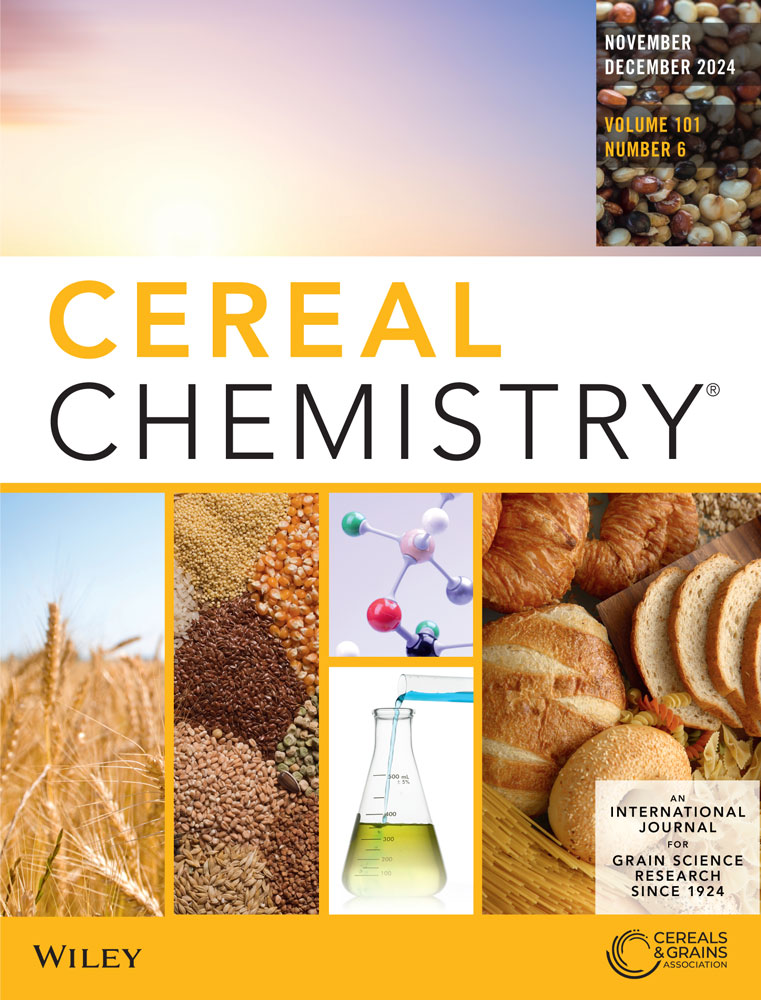Evaluating the Impact of Flour Protein Content on the Quality of Wholegrain Refrigerated Dough
Abstract
Background and Objectives
Refrigerated dough products offer convenience, but are often produced using refined flour. However, wholewheat flour-based products provide health benefits by increasing dietary fiber intake. This study aims to determine the optimal flour protein content for developing clean label refrigerated dough using wholegrain Canada Western Red Spring (CWRS) wheat. Three CWRS wheat samples with varying protein contents: Sample 1–Average Protein (S1-AP) (13.30%), Sample 2—Intermediate High Protein (S2-IHP) (14.91%), and Sample 3—High Protein (S3-HP) (16.48%), were analyzed. The proximate composition of wholegrain flour samples was determined using standard methods. Dough mixing and starch pasting properties were evaluated using micro-dough LAB and RVA, respectively. Dough samples were prepared and stored at 4°C for 35 days, with subsets baked and assessed for end-use quality every 7 days. Xylanase activity and dough syruping were monitored throughout storage.
Findings
S3-HP exhibited reduced starch pasting properties, shorter dough development time, and lower stability. S2-IHP demonstrated better mixing stability and lower mixing tolerance index, indicating superior dough handling properties. Xylanase activity was highest in S1-AP at 35 days and lowest in S2-IHP. Dough syruping increased significantly during the first 14 days and stabilized thereafter. Bread quality declined with storage, with volume decreasing and firmness increasing, especially in S1-AP. Lightness (L*) decreased over time in all samples.
Conclusions
S2-IHP, which showed intermediate/moderately high protein content, was identified as the most suitable for wholegrain refrigerated dough, as it maintained superior end-use quality characteristics compared to the other samples.
Significance and Novelty
This study provides insights into the impact of flour protein content on the functionality and storage stability of wholegrain refrigerated dough, aiding in the development of clean label products with improved quality and processing characteristics.


 求助内容:
求助内容: 应助结果提醒方式:
应助结果提醒方式:


